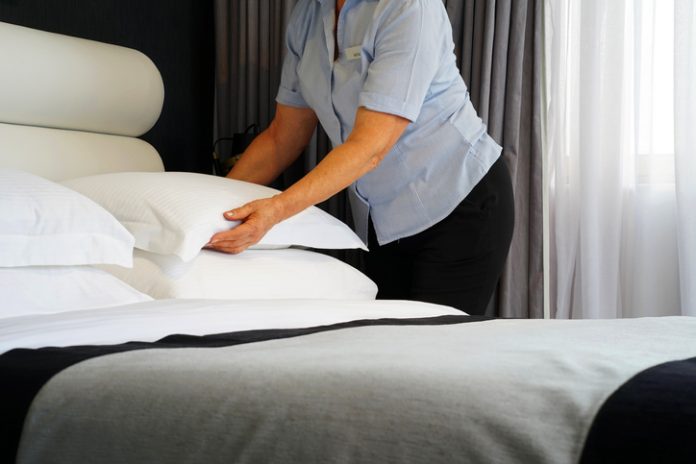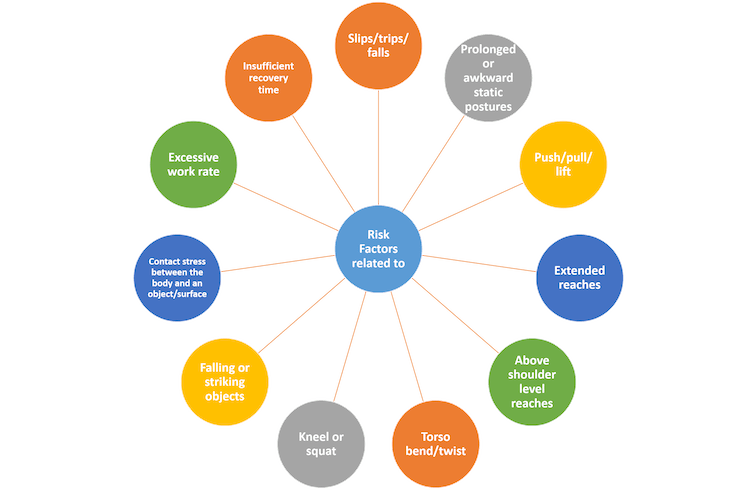
Ergonomics is defined as the design of the workplace, equipment, machine, tool, product, environment, and system, taking into consideration the human’s physical, physiological, biomechanical, and psychological capabilities, and optimizing the effectiveness and productivity of work systems while assuring the safety, health, and wellbeing of the workers.
Musculoskeletal Disorders (MSDs) are physical injuries developed over a period of time as a result of excessive stresses on a specific body part. MSD may be caused by mechanical (physical) exposure at work or due to an underlying disease not related to work. Ergonomics literature indicates that the four basic occupational risk factors associated with the development of MSDs are awkward postures, excessive manual force, high rates of manual repetition, and task duration (or inadequate rest). MSDs are costly and can significantly reduce worker productivity and morale. Workers suffering from MSDs have difficulty meeting the demands of their jobs.
Establishing an ergonomics program would enable employers to detect MSD problems and develop solutions. This approach prevents further losses in productivity, quality, and profit by lowering rates of absenteeism, lost time injury, and worker compensation premiums. As part of a joint effort, employers, workers, and other stakeholders with an understanding of ergonomics can design effective programs to prevent and minimize MSDs.
In March 2018, the California Office of Administrative Law approved a new regulation that would require hotels and similar establishments to implement new requirements to protect employees who perform any housekeeping or housekeeping related tasks from any “musculoskeletal injury.” This was enacted as the Hotel Housekeeping Musculoskeletal Injury Prevention (MIPP) standard. One of the requirements of the MIPP is to incorporate worksite evaluation as part of the program. The diagram below shows some such risk factors that need to be identified as part of worksite evaluations as suggested by the MIPP standard.

When properly managed, ergonomics programs can save worker’s compensation/injury costs, improve customer survey scores, and reduce injuries and improve worker efficiency and morale through standardization. Below are three ergonomics interventions that work.
1Reduce awkward body postures.
Reduce awkward body postures or positions of the body that deviate significantly from the neutral position. This is usually accomplished with hand-tools, revised procedures, and training. Some examples of this include reducing forward/sideways bending and twisting of the back, extended or overhead reaches, bending of the wrist, pinching, squatting, and kneeling.
2Reduce the forces applied.
Whether lifting, pushing, pulling, or carrying an object, hotels should reduce the weight of objects that staff must lift and reduce the amount of force required to push or pull of objects like carts, vacuums, and cleaners. This is usually accomplished with equipment redesign, selection, and training.
3Provide adequate rest for the muscle groups involved.
Hotels should reduce the time housekeeping staff spend on tasks that use the same muscle groups through work pace control and by varying the type of work they do during their shift.
In summary, the introduction of the new MIPP standard for housekeepers aims to decrease workplace injuries through identification and evaluation of risk factors, implementation and documentation of efforts and controls to reduce risk, and involvement of all stakeholders during the process. Optimizing the housekeeping practices and navigating this MIPP standard can be a difficult and challenging endeavor for a lay-person, and, therefore, requires a qualified professional such as a Certified Professional Ergonomist (CPE). Leveraging the services of a CPE with experience in the industry can result in identifying these risk factors, proposing solutions to potential hazards, assisting in the audit process, and adhering to the MIPP standard.











